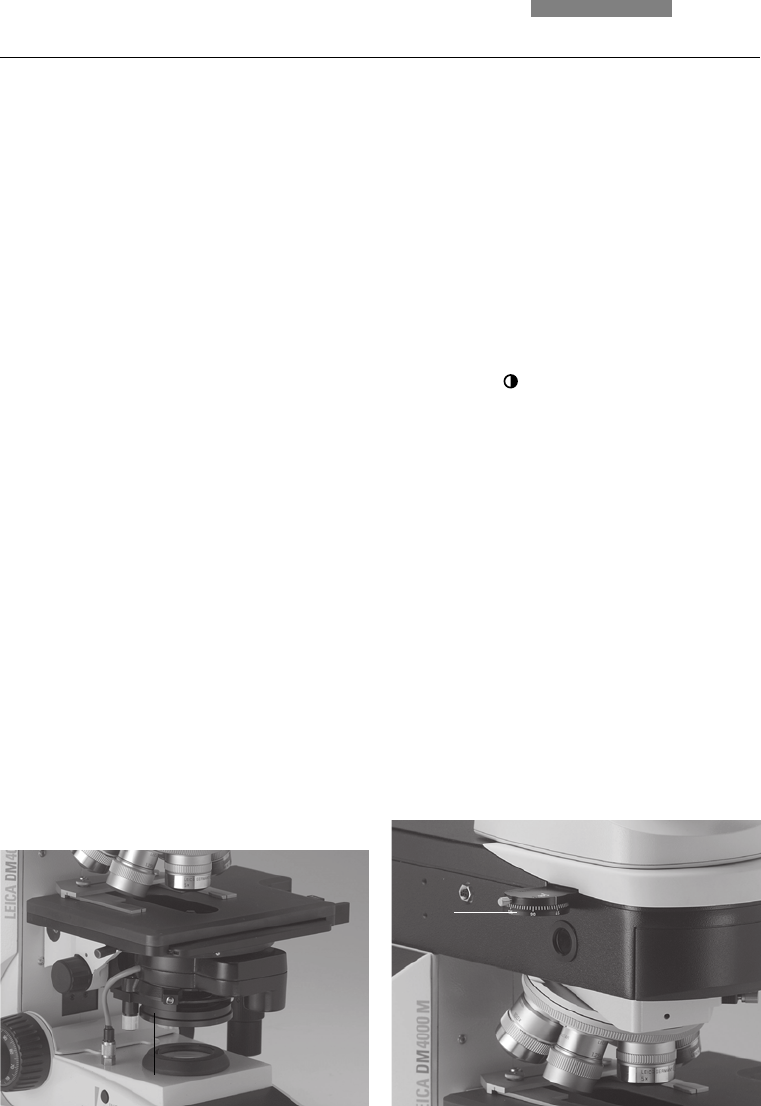
68
9. Contrast methods for Leica DM4000 B/DM4500 P/DM5000 B
9.1.4.3 Motorized method
• After the POL contrast method has been se-
lected, the position of the polarizer is
switched inside the condenser (if the micro-
scope is equipped with these components).
The analyzer cube is also automatically
brought into the beam path.
9.1.4.4 Combined methods
• For the Leica DM4000 B, DM4500 P and Leica
DM5000 B microscopes, it is possible to com-
bine purely mechanical and motorized compo-
nents.
For DM4500 P only:
After the Bertrand lens (links) is turned inwards,
CONOS appears on the display. The light intensi-
ty and aperture and field diaphragms are as-
signed to the objective currently in use (objec-
tive magnification for conoscopy is 40x, 63x or
100x).
9.1.5 Differential interference contrast (TL)
9.1.5.1 DM4500 P
• Switch to the transmitted light axis (TL) by
pushing the TL/IL function key.
• Insert a specimen and rotate a suitable objec-
tive into place.
• Select the DIC contrast method.
Do so by pressing the DIC variable key.
Or by pressing the variable button.
CHANGE TL
.
(For details on key assignments, please see
the identification sheet.)
ICT appears on the display.
• Turn the polarizer on the underside of the con-
denser into the light path. Make sure that the
red index point on the front of the polarizer is
at 0 (Fig. 72).
Fig. 72 Turn the polarizer inward
1 Polarizer
Fig. 73 Inserting the analyzer
1 Analyzer
1
1


















